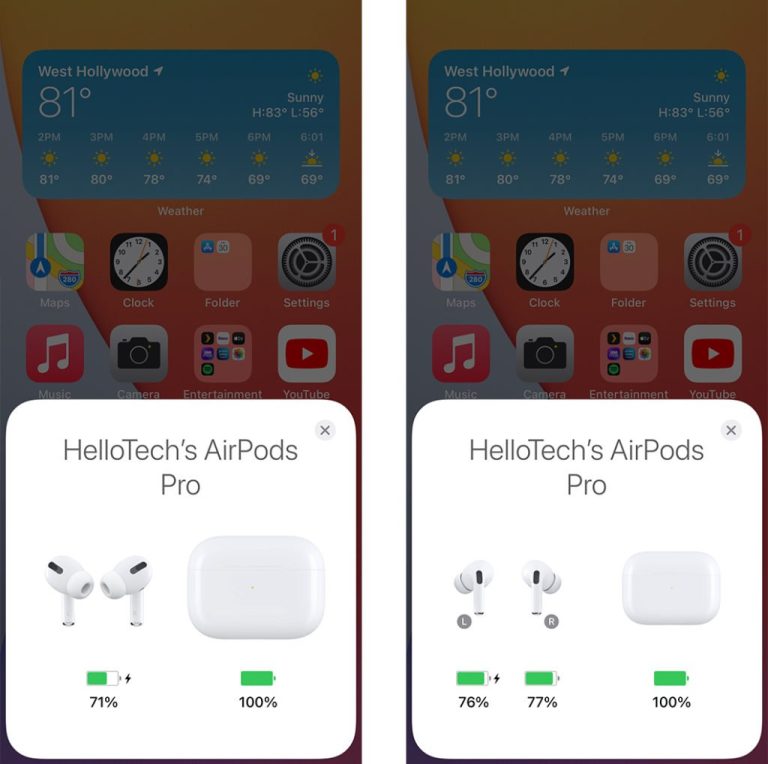Need to Disconnect Car Battery? Best Method to do in 2024
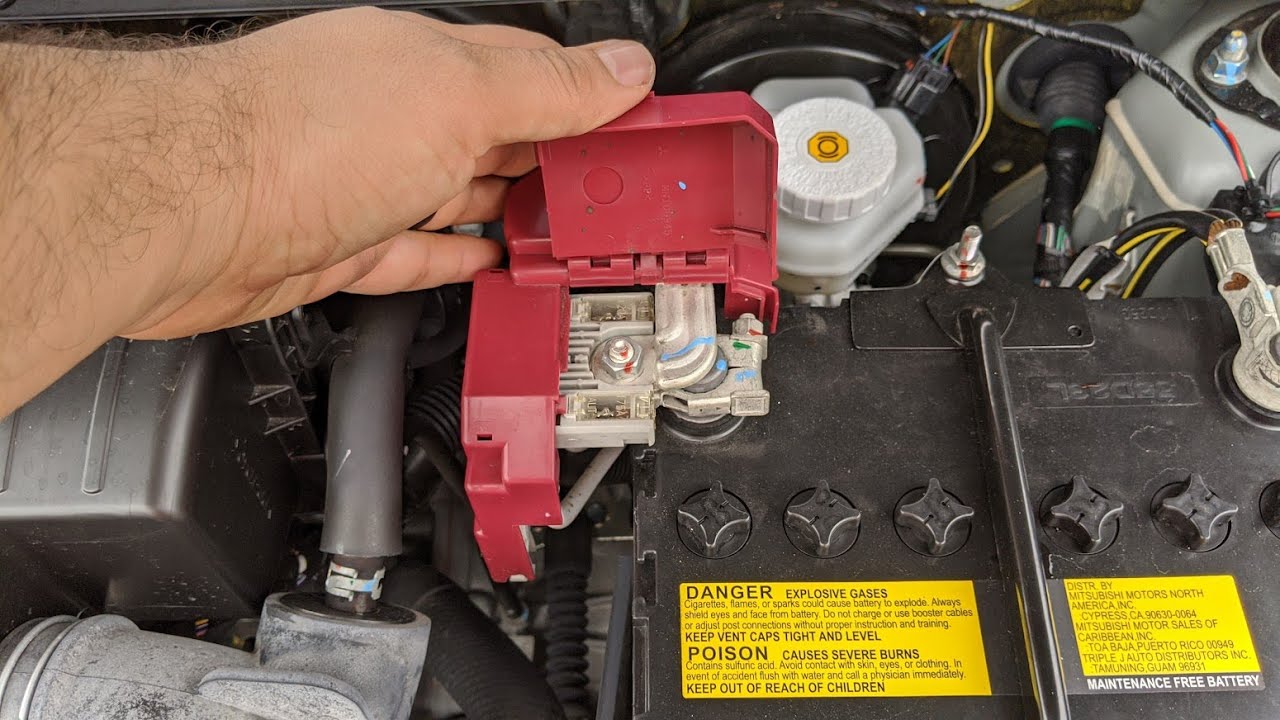
Introduction

Welcome to our comprehensive guide to disconnect car battery. Whether you’re looking to prevent damage, perform maintenance, or replace your battery, knowing how to disconnect it is an essential skill for every car owner. And the best part is, you don’t need to take your vehicle to a mechanic or auto shop – you can easily do it yourself with the help of this guide.
Car batteries are vital components of your vehicle, providing the necessary power for starting your engine, running electrical systems, and even charging your phone on the go. However, there may be situations where you need to disconnect the battery. This could be due to long-term storage, to reset error codes, or to safely perform maintenance on other parts of your car without any electrical interference.
Taking the time to properly disconnect your car battery not only ensures your safety but also prevents any damage to your vehicle’s electrical system. It’s a relatively simple process that anyone can learn, and we’re here to walk you through it step by step.
In this guide, you’ll learn the reasons for disconnecting your car battery, important safety precautions to consider, the tools you’ll need, and a detailed step-by-step guide to do it properly. We’ll also cover potential issues you may encounter and troubleshooting tips. Lastly, we’ll discuss the importance of reconnecting your battery correctly to maintain optimal performance.
So let’s get started and learn everything you need to know about disconnecting your car battery!
Reasons to Disconnect Car Battery
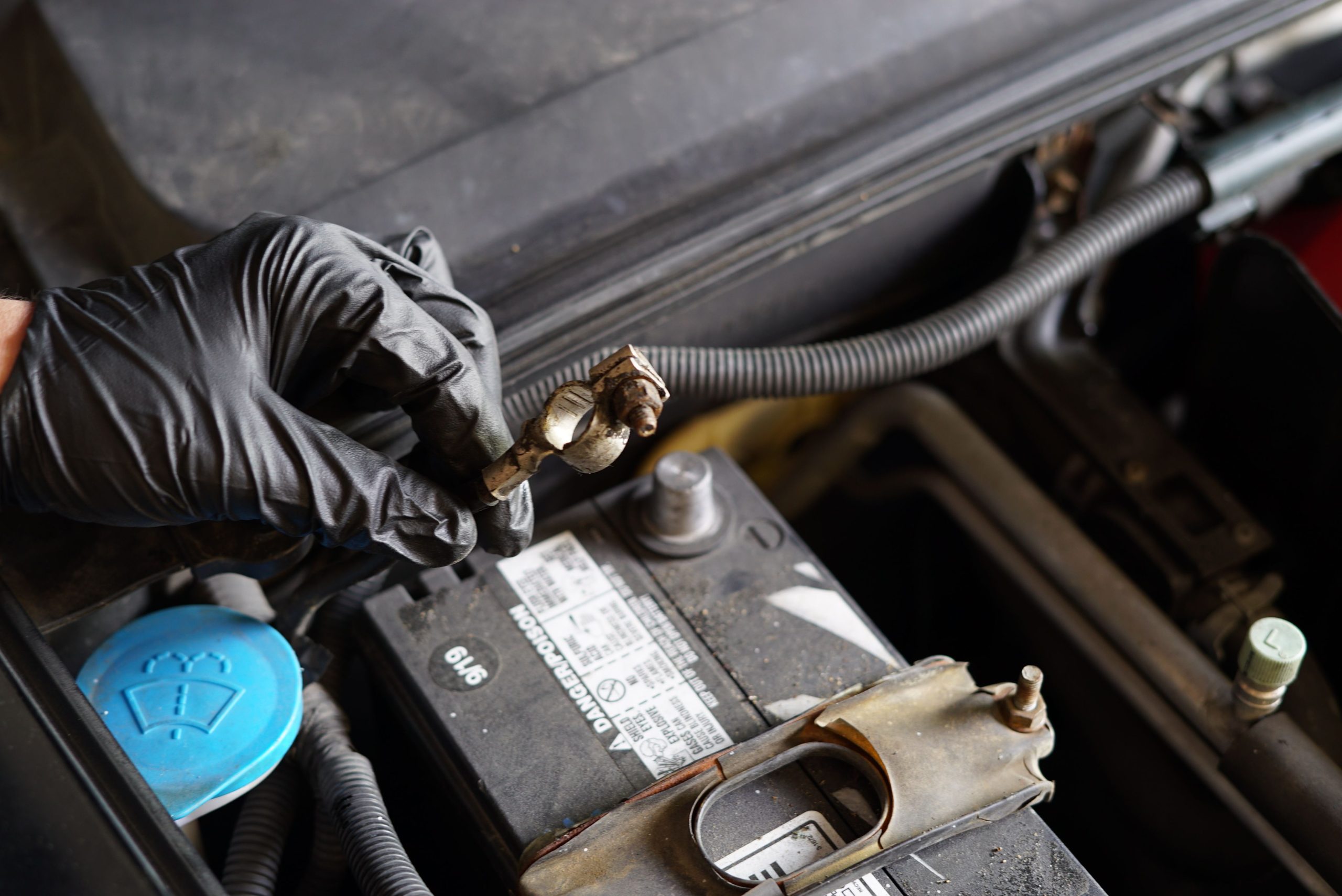
Disconnecting your car battery may be necessary for several reasons. Here are some common situations where you might need to disconnect your car battery:
- Battery replacement: If your battery is old or not holding a charge, it may need to be replaced. Disconnecting the battery is the first step in safely removing it from your vehicle.
- Maintenance and repairs: Disconnecting the battery can help prevent damage to your car’s electrical system while performing maintenance or repairs on other parts of your vehicle. It ensures that there is no electrical interference during the process.
- Error code reset: In some cases, disconnecting the battery can help reset error codes in your vehicle’s computer system. This can be useful if you’re experiencing issues with your engine or other components and want to start fresh.
- Long-term storage: If you’re planning to store your vehicle for an extended period, it’s recommended to disconnect the battery. This prevents any drain on the battery and helps preserve its life.
- Electrical safety: Disconnecting the battery is a safety precaution when working on the electrical systems of your car. It reduces the risk of accidental shocks or short circuits.
Remember, always consult your vehicle’s manual or seek professional advice if you’re unsure about disconnecting your car battery. Properly disconnecting and reconnecting the battery is important to avoid any damage to your vehicle’s electrical system and ensure your safety.
Safety Precautions to Consider to Disconnect Car Battery

When it comes to disconnecting and reconnecting your car battery, safety should always be your top priority. Taking the proper precautions will not only protect you from potential harm but also prevent any damage to your vehicle’s electrical system. Here are some safety precautions to consider:
- Wear protective gear: Before starting the process, make sure to wear safety gloves and safety glasses to protect your hands and eyes from any potential sparks, battery acid, or other harmful substances.
- Disconnect the negative terminal first: When disconnecting your car battery, always start by removing the negative terminal connection. This will help prevent any accidental grounding or short circuits.
- Avoid touching both terminals simultaneously: Never touch both the positive and negative terminals at the same time with any conductive object, as this can cause a short circuit or electrical shock.
- Keep tools and metal objects away from the battery: Ensure that any tools or metal objects are kept away from the battery terminals or any exposed wires to prevent accidental contact and short circuits.
- Store the disconnected battery in a safe place: If you’re removing the battery for maintenance or storage, store it in a dry and well-ventilated area away from any flammable materials.
- Follow proper battery disposal procedures: When disposing of an old battery, make sure to follow the proper disposal guidelines in your area. Batteries contain hazardous materials and should not be thrown in the garbage.
By following these safety precautions, you can safely disconnect and reconnect your car battery without any accidents or damage. Remember, if you’re unsure about any step in the process, it’s always best to seek professional assistance or consult your vehicle’s manual.
Tools Needed to Disconnect Car Battery

To disconnect your car battery, you will need a few essential tools to ensure a smooth process. Here are the tools you will need:
- Safety gloves: These will protect your hands from any potential sparks, battery acid, or other harmful substances.
- Safety glasses: Wear these to protect your eyes from any debris or splashing battery acid.
- Wrench or pliers: You will need these to loosen and remove the battery terminal connections.
- Battery terminal cleaner or wire brush: This tool will help you clean the battery terminals and remove any corrosion or buildup.
- Battery terminal protectant spray: After cleaning the terminals, use this spray to prevent future corrosion.
- Battery storage mat or box: If you are disconnecting the battery for storage, a battery storage mat or box will keep it secure and prevent any accidental damage.
Tips for preparing your tools:
- Before starting the process, ensure that all your tools are clean and in good condition. This will ensure their effectiveness and safety.
- Familiarize yourself with the sizes of your battery terminal connections. This will help you choose the right sized wrench or pliers.
- Keep all your tools organized and easily accessible. This will save you time and prevent any misplacement or loss during the process.
By having these tools ready, you can confidently and safely disconnect your car battery. Remember to always prioritize safety and take the necessary precautions throughout the process.
Essential tools for disconnecting your car battery

When it comes to disconnecting your car battery, having the right tools on hand is essential for a smooth and safe process. Here are the tools you will need:
- Safety gloves: Safety should always be a priority, and wearing gloves will protect your hands from any potential sparks, battery acid, or other harmful substances.
- Safety glasses: It’s important to protect your eyes from any debris or splashing battery acid. Safety glasses will provide the necessary protection.
- Wrench or pliers: You will need a wrench or pliers to loosen and remove the battery terminal connections. Make sure to choose the right size that fits your battery terminals.
- Battery terminal cleaner or wire brush: Over time, battery terminals can accumulate corrosion or buildup, which can affect the performance of your battery. A battery terminal cleaner or wire brush will help you clean the terminals effectively.
- Battery terminal protectant spray: After cleaning the terminals, it’s important to use a battery terminal protectant spray. This spray helps prevent future corrosion and ensures optimal battery performance.
- Battery storage mat or box: If you are disconnecting the battery for storage purposes, a battery storage mat or box is highly recommended. It will keep the battery secure and prevent any accidental damage.
By having these essential tools ready, you can confidently and safely disconnect your car battery. Remember to always prioritize safety and take the necessary precautions throughout the process. With the right tools and proper technique, you’ll be able to disconnect your car battery effortlessly.
Tips for preparing your tools
When it comes to disconnecting your car battery, being prepared with the right tools is crucial. Here are some helpful tips to ensure that your tools are ready for the task at hand:
- Safety first: Before you begin, ensure that you have safety gloves and glasses readily available. These will protect your hands and eyes from sparks, battery acid, and other potential hazards.
- Check the condition of your tools: Inspect your wrench or pliers to ensure that they are in good working condition. Look for any signs of wear or damage that could hinder their effectiveness. It’s always a good idea to have a backup set of tools in case one fails.
- Make sure your tools fit: Check that the wrench or pliers you are using are the correct size for your battery terminals. Using the wrong size tool can lead to stripped or damaged terminals, making it difficult to disconnect and reconnect the battery.
- Clean or replace corroded tools: Over time, tools can accumulate rust or corrosion, which can affect their performance. Before disconnecting your battery, clean any corrosion off your tools or replace them if necessary. This will ensure a tight connection with the battery terminals.
- Organize your tools: Keep your tools organized and easily accessible. This will save time and frustration when it comes to disconnecting and reconnecting the battery. Consider using a toolbox or tool bag to keep everything in one place.
By following these tips, you can ensure that your tools are in the best condition possible for disconnecting your car battery. Preparing your tools beforehand will make the process smoother and more efficient, allowing you to successfully complete the task.
Step-by-Step Guide
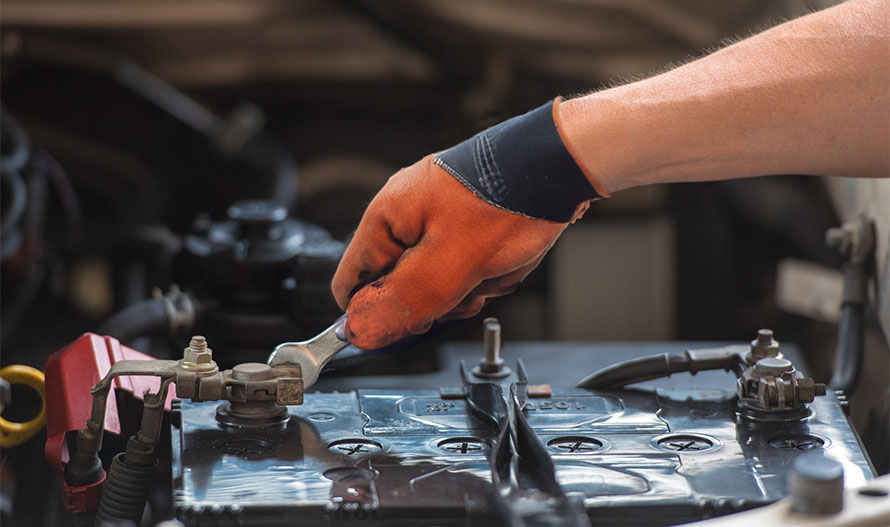
Here is a step-by-step guide to help you safely disconnect your car battery:
Step 1: Start by turning off the ignition. This will prevent any accidental electrical currents from flowing and reduce the risk of injury.
Step 2: Locate your car battery. It is usually located in the engine compartment or trunk. Refer to your vehicle’s owner’s manual if you’re unsure of its location.
Step 3: Identify the negative terminal. The negative terminal is usually marked with a minus (-) sign and is designated by the color black. It is important to disconnect the negative terminal first to avoid any electrical shock.
Step 4: Loosen the nut on the negative terminal using a wrench. Be careful not to touch any metal surfaces with the wrench while doing this to prevent any sparks.
Step 5: Once the nut is loosened, carefully remove the negative connector from the terminal. Set it aside in a safe place where it won’t come into contact with any metal surfaces.
Step 6: Repeat the same process for the positive terminal. The positive terminal is usually marked with a plus (+) sign and is designated by the color red.
Step 7: After disconnecting both terminals, you can choose to remove the battery from the vehicle if necessary. This can be done by loosening the battery hold-down clamp and carefully lifting the battery out of its tray.
Remember, it’s important to follow these steps in reverse order when reconnecting your car battery. Start by connecting the positive terminal first, followed by the negative terminal. Take your time and double-check your connections to ensure a secure and proper fit.
By following this step-by-step guide, you can safely and effectively disconnect your car battery. Remember to always exercise caution and refer to your vehicle’s owner’s manual for any specific instructions or precautions.
Step 1: Locate the battery and identify the terminals

To safely disconnect your car battery, the first step is to locate the battery and identify the terminals. In most vehicles, the battery is located in the engine compartment. However, some cars may have the battery in the trunk or under the rear seat.
Here’s a step-by-step guide to help you locate the battery and identify the terminals:
- Open the hood or trunk of your car and secure it in place using the prop rod or hood latch.
- Look for a rectangular box with cables attached to it. This box is the battery.
- Once you’ve located the battery, carefully examine it to identify the terminals. The battery has two terminals – the positive terminal and the negative terminal.
- The positive terminal is usually marked with a plus (+) sign and is typically colored red. It is connected to the main electrical system of the vehicle.
- The negative terminal, on the other hand, is usually marked with a minus (-) sign and is typically colored black. It is connected to the vehicle’s chassis or ground.
It’s important to correctly identify the terminals to ensure you disconnect the battery safely. Always refer to your vehicle’s owner’s manual for specific instructions, as terminal markings may vary between different car makes and models.
Taking the time to locate the battery and identify the terminals is crucial for a smooth disconnection process. Once you have located and identified the terminals, you can move on to the next steps of disconnecting the negative and positive terminal connections.
Step 2: Remove the negative terminal connection

To safely disconnect your car battery, the next step is to remove the negative terminal connection. This is an important step in the process, as it helps prevent any electrical shorts or accidents.
Here’s a step-by-step guide to help you remove the negative terminal connection:
- Before you begin, make sure the engine is turned off and the keys are removed from the ignition. This ensures your safety during the disconnection process.
- Locate the negative terminal on the battery. It is usually marked with a negative symbol (-) and has a black-colored cable attached to it. Take note of the position of the terminal for reconnection later.
- Use a wrench or socket to loosen the nut or bolt securing the negative terminal. Turn it counterclockwise until it is loose enough to be easily removed. Be careful not to touch any metal surfaces with the wrench while doing this to avoid any electrical shocks.
- Once the nut or bolt is loose, gently remove the negative cable from the terminal. Keep it away from other metal surfaces to prevent any accidental contact.
- After removing the negative terminal connection, secure it to a clean and dry area of the car battery or to a non-metal surface. This helps prevent any accidental contact and ensures the cable does not create a circuit.
By following these steps, you can safely remove the negative terminal connection from your car battery. Remember to be cautious and take your time to avoid any potential accidents or damage to your vehicle.
Step 3: Remove the positive terminal connection

Now that you’ve safely removed the negative terminal connection, it’s time to move on to the positive terminal. Follow these steps to remove the positive terminal connection from your car battery:
- Locate the positive terminal: The positive terminal is usually marked with a positive symbol (+) and has a red-colored cable attached to it. Take note of its position for reconnection later.
- Use a wrench or socket: Just like with the negative terminal, use a wrench or socket to loosen the nut or bolt securing the positive terminal. Turn it counterclockwise until it is loose enough to be easily removed. Remember to avoid touching any metal surfaces with the wrench to prevent electrical shocks.
- Gently remove the positive cable: Once the nut or bolt is loose, carefully remove the positive cable from the terminal. Again, keep it away from other metal surfaces to prevent any accidental contact.
- Secure the positive terminal: After removing the positive terminal connection, secure it to a clean and dry area of the car battery or to a non-metal surface. This will help prevent accidental contact and ensure the cable does not create a circuit.
Remember to follow these steps carefully and take your time to avoid any accidents or damage to your vehicle. Disconnecting the positive terminal is crucial when working on your car battery, as it helps prevent any electrical shorts or mishaps.
Potential Issues and Troubleshooting
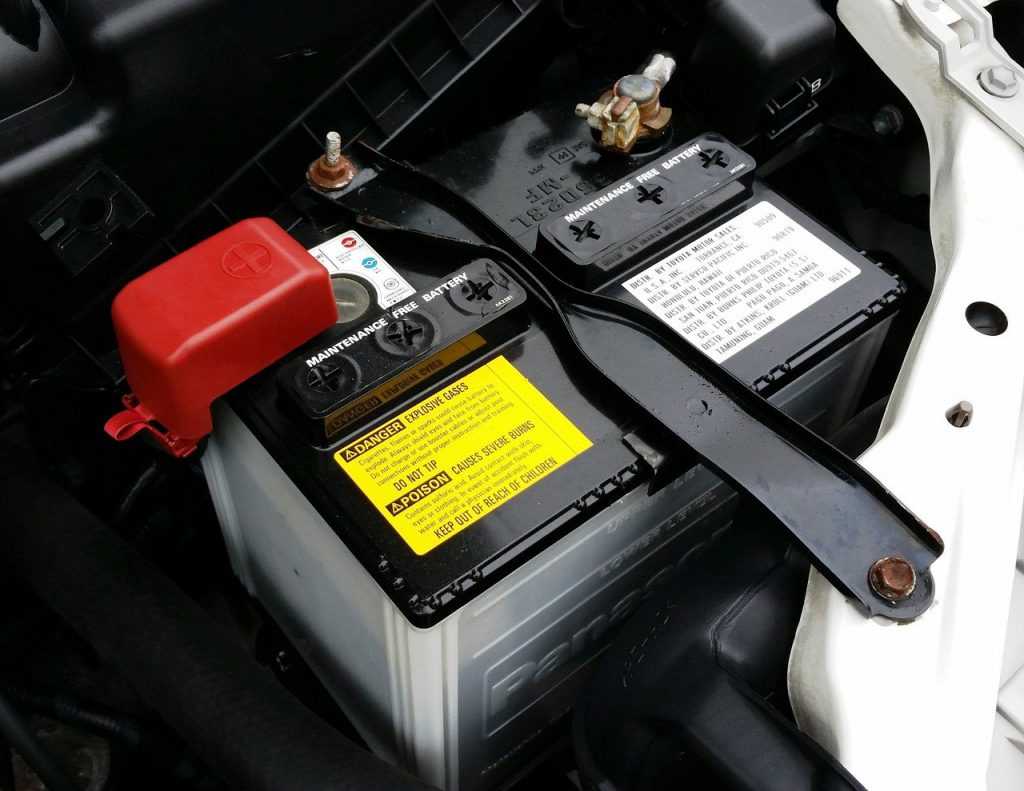
When disconnecting your car battery, there are a few potential issues that you may encounter. Here are some common problems and troubleshooting tips to help you address them:
- Battery memory loss: Disconnecting the battery can cause the vehicle’s computer system to lose important information, such as radio presets or the clock. To reset these settings, consult your vehicle’s owner manual for instructions or visit a dealership to have it reprogrammed.
- Difficulty removing terminals: If you’re having trouble removing the terminals, it could be due to corrosion or rust. In this case, you can use a battery terminal cleaner or a mixture of baking soda and water to clean the terminals. If necessary, use a wire brush or sandpaper to remove any stubborn buildup.
- Loose connections after reconnection: After reconnecting the battery, make sure the terminals are securely tightened. Loose connections can prevent proper electrical flow and cause issues with starting the vehicle. Double-check that the terminals are tight using a wrench or socket.
- Electrical system reset: Disconnecting the battery can sometimes trigger the vehicle’s electrical system to reset. This may cause issues with certain electronics, such as the radio or power windows. If this occurs, consult your vehicle’s manual for instructions on how to reset these systems or visit a professional for assistance.
Remember, if you encounter any troubles that you’re unsure how to handle, it’s always best to consult a professional mechanic. They have the expertise to diagnose and resolve any issues with your car battery or electrical system.
Common issues when disconnecting a car battery

When disconnecting your car battery, you may encounter some common issues. Here are a few potential problems and troubleshooting tips to help you address them:
- Battery memory loss: Disconnecting the battery can cause your vehicle’s computer system to lose important information, such as radio presets or the clock. To reset these settings, consult your vehicle’s owner manual for instructions or visit a dealership to have it reprogrammed.
- Difficulty removing terminals: If you’re having trouble removing the battery terminals, it could be due to corrosion or rust. In this case, you can use a battery terminal cleaner or a mixture of baking soda and water to clean the terminals. If necessary, use a wire brush or sandpaper to remove any stubborn buildup.
- Loose connections after reconnection: After reconnecting the battery, make sure the terminals are securely tightened. Loose connections can prevent proper electrical flow and cause issues with starting the vehicle. Double-check that the terminals are tight using a wrench or socket.
- Electrical system reset: Disconnecting the battery can sometimes trigger the vehicle’s electrical system to reset. This may cause issues with certain electronics, such as the radio or power windows. If this occurs, consult your vehicle’s manual for instructions on how to reset these systems or visit a professional for assistance.
Remember, if you encounter any problems that you’re unsure how to handle, it’s always best to consult a professional mechanic. They have the expertise to diagnose and resolve any issues with your car battery or electrical system. By being aware of these potential issues and knowing how to address them, you can safely disconnect and reconnect your car battery when needed.
Troubleshooting tips for resolving problems

If you encounter any issues when disconnecting your car battery, here are some troubleshooting tips to help you resolve them:
- Battery memory loss: When you reconnect the battery, you may notice that the radio presets or clock settings have been lost. To fix this, consult your vehicle’s owner manual for instructions on how to reset these settings. Alternatively, you can visit a dealership to have the system reprogrammed.
- Difficulty removing terminals: If you’re having trouble removing the battery terminals, it could be due to corrosion or rust. In this case, use a battery terminal cleaner or a mixture of baking soda and water to clean the terminals. If necessary, use a wire brush or sandpaper to remove any stubborn buildup.
- Loose connections after reconnection: After reconnecting the battery, ensure the terminals are securely tightened. Loose connections can lead to electrical issues and difficulties starting the vehicle. Double-check that the terminals are tight using a wrench or socket.
- Electrical system reset: Disconnecting the battery can sometimes cause the vehicle’s electrical system to reset, leading to issues with certain electronics like the radio or power windows. If this occurs, consult your vehicle’s manual for instructions on how to reset these systems. Alternatively, you can seek assistance from a professional.
It’s important to remember that if you’re unsure how to handle any problems, it’s always best to consult a professional mechanic. They have the expertise to diagnose and resolve any issues with your car battery or electrical system. By being aware of these potential issues and knowing how to address them, you can safely disconnect and reconnect your car battery when needed.
Reconnecting the Battery

Now that you have successfully disconnected your car battery, it’s time to reconnect it. Follow these steps to ensure a proper and safe reconnection:
- Clean the battery terminal connections: Before reconnecting the battery, take the time to clean the terminals. Over time, corrosion can build up, which can affect the battery’s performance. Use a battery terminal cleaner or a mixture of baking soda and water to clean the terminals. Scrub them gently with a wire brush or sandpaper to remove any stubborn buildup.
- Reconnect the positive terminal: Start by connecting the positive terminal. This terminal is usually red and marked with a plus sign (+). Lift the protective cover if it’s present and place the terminal over the positive battery post. Tighten the nut or bolt securely with a wrench or socket.
- Reconnect the negative terminal: Next, connect the negative terminal. This terminal is usually black and marked with a minus sign (-). Lift the protective cover and place the terminal over the negative battery post. Again, tighten the nut or bolt securely with a wrench or socket.
- Double-check the connections: After reconnecting both terminals, give them a gentle tug to ensure they are secure. Loose connections can cause electrical issues or difficulties starting the vehicle. If necessary, use a wrench or socket to tighten them further.
By following these steps, you can safely and effectively reconnect your car battery. Remember, proper battery maintenance is crucial for the overall performance and longevity of your vehicle. If you have any doubts or concerns, don’t hesitate to consult a professional mechanic. They can provide further guidance and assistance. Happy reconnecting!
Step 1: Clean the battery terminal connections

After disconnecting your car battery, it’s essential to clean the battery terminal connections before reconnecting. Over time, corrosion can build up on the terminals, affecting the battery’s performance. Follow these steps to clean the terminals and ensure a solid connection:
- Gather your materials: You will need a battery terminal cleaner or a mixture of baking soda and water, a wire brush or sandpaper, and a clean cloth.
- Prepare the cleaning solution: If using a battery terminal cleaner, simply spray it onto the terminals. If using baking soda and water, mix a tablespoon of baking soda with a cup of water to create a paste.
- Apply the cleaning solution: Use a brush or cloth to apply the cleaning solution to the terminals. Scrub gently to remove any corrosion or dirt. The baking soda paste can be especially effective at removing stubborn buildup.
- Rinse the terminals: After scrubbing, rinse the terminals with water to remove any residue from the cleaning solution.
- Dry and inspect the terminals: Use a clean cloth to dry the terminals thoroughly. Then, inspect them for any remaining corrosion or damage. If necessary, repeat the cleaning process until the terminals are clean and shiny.
By cleaning the battery terminal connections, you ensure a good electrical connection and prolong the life of your battery. Remember to always wear protective gloves and eyewear when working with batteries.
Step 2: Reconnect the positive terminal

Now that you have successfully disconnected the negative terminal, it’s time to reconnect the positive terminal of your car battery. Follow these steps to ensure a safe and successful reconnection:
- Verify the position of the positive terminal: Locate the positive terminal, which is typically labeled with a plus sign (+) or the letters “POS” or “P.” Double-check that you have identified the correct terminal before proceeding.
- Clean the positive terminal: Before reconnecting, take a moment to clean the positive terminal. Use a wire brush or sandpaper to remove any corrosion or dirt that has accumulated. This will help ensure a solid connection.
- Position the positive cable: Take the positive cable and align it with the positive terminal. Make sure the cable end is clean and free from any debris. Place the cable securely onto the terminal, ensuring a tight fit.
- Tighten the nut: Using your socket wrench, carefully tighten the nut on the positive terminal. Be careful not to overtighten, as this can damage the terminal. Check that the connection is secure by giving the cable a gentle tug.
- Inspect the connection: Once the positive terminal is securely connected, visually inspect the connection to ensure there are no loose wires or exposed metal. Any loose or exposed parts should be addressed immediately.
Remember, always reconnect the positive terminal before the negative terminal when connecting your car battery. This helps prevent any accidental sparking or electrical issues. By following these steps, you can safely and effectively reconnect your car battery.
Step 3: Reconnect the negative terminal
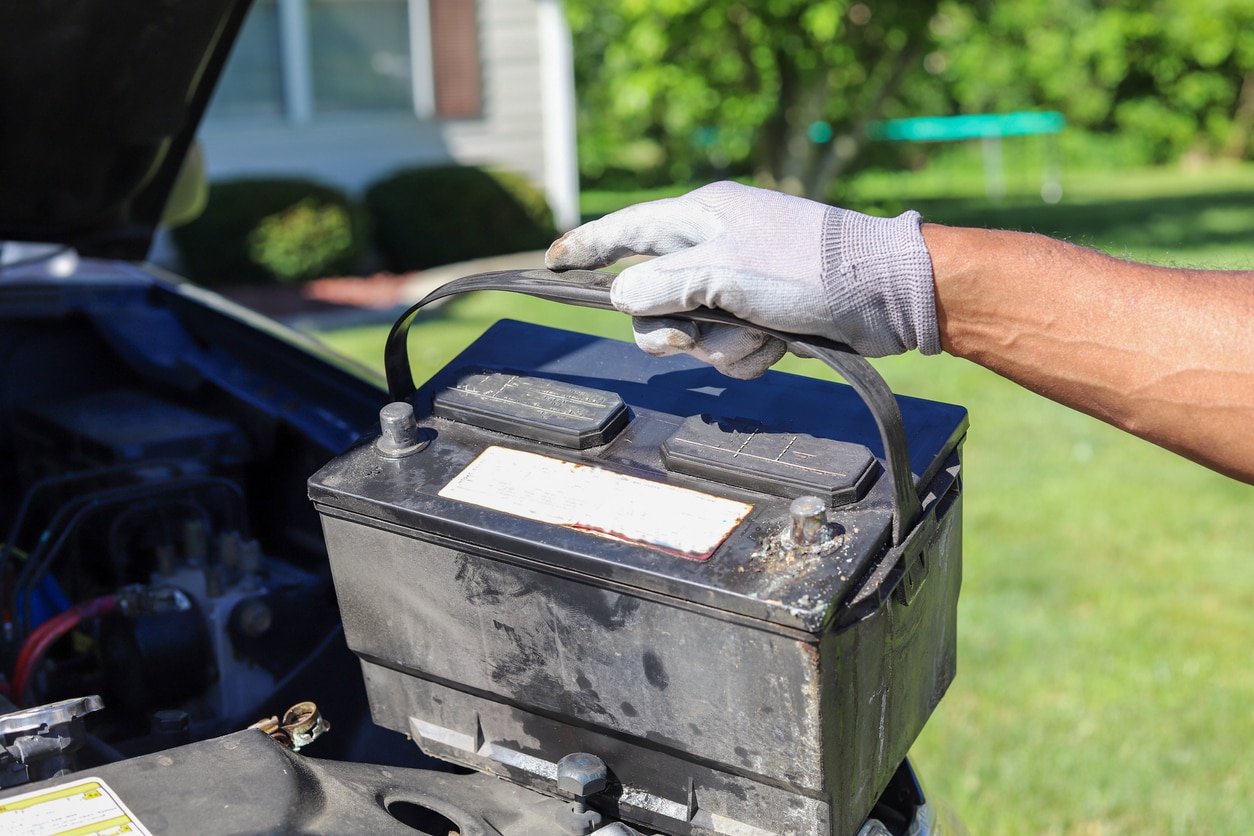
After successfully disconnecting the positive terminal of your car battery, it’s time to reconnect the negative terminal. Follow these steps to ensure a safe and proper reconnection:
- Verify the position of the negative terminal: Locate the negative terminal, which is typically labeled with a minus sign (-) or the letters “NEG” or “N.” Take a moment to double-check that you have identified the correct terminal before proceeding.
- Clean the negative terminal: Before reconnecting, take some time to clean the negative terminal. Use a wire brush or sandpaper to remove any corrosion or dirt that may have accumulated. This will help ensure a solid connection.
- Position the negative cable: Take the negative cable and align it with the negative terminal. Ensure that the cable end is clean and free from any debris. Place the cable securely onto the terminal, making sure it fits tightly.
- Tighten the nut: Using your socket wrench, carefully tighten the nut on the negative terminal. Be cautious not to overtighten, as this can damage the terminal. To ensure a secure connection, gently tug on the cable to verify that it is properly attached.
- Double-check the connection: Once the negative terminal is securely connected, visually inspect the connection to ensure there are no loose wires or exposed metal. If you notice any issues, address them immediately before proceeding.
By following these steps, you can safely and effectively reconnect the negative terminal of your car battery. Keep in mind that reconnecting the negative terminal should always be done after reconnecting the positive terminal to prevent any accidental sparking or electrical issues.
Conclusion
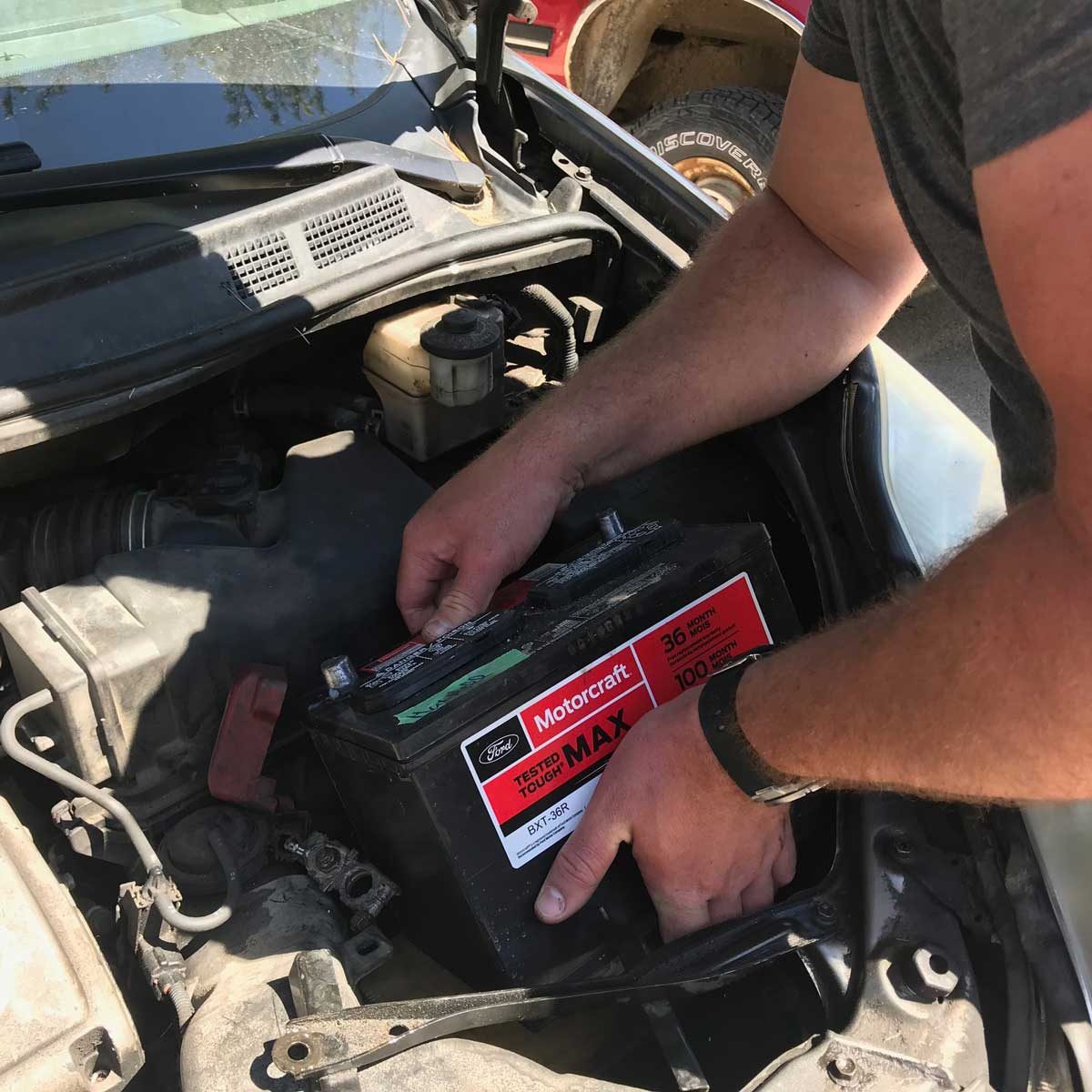
In conclusion, knowing how to safely disconnect and reconnect your car battery is a valuable skill for any car owner. Whether you need to prevent damage, perform maintenance, or replace the battery, following these steps will ensure a smooth process.
By disconnecting your car battery properly, you can minimize the risk of electrical issues and damage to sensitive components. Remember to always follow safety precautions, such as wearing gloves and safety glasses, to protect yourself from any potential hazards.
Additionally, keeping your tools organized and clean is essential for a successful disconnection and reconnection process. This will help you avoid any unnecessary delays or complications during the procedure.
When troubleshooting potential issues, it’s important to consult professional advice or seek assistance if needed. This will ensure that any problems are properly addressed and resolved.
Lastly, reconnecting the battery in the correct order, starting with the positive terminal and then the negative terminal, is crucial for the smooth operation of your vehicle. Double-checking the connections and ensuring they are secure will provide peace of mind and prevent any accidental disconnections.
By following these guidelines and taking the necessary precautions, you can confidently disconnect and reconnect your car battery when needed. Remember to consult your vehicle’s manual for specific instructions and recommendations. Proper battery maintenance will help prolong its lifespan and ensure optimal performance for your car.
Importance of properly disconnecting and reconnecting your car battery
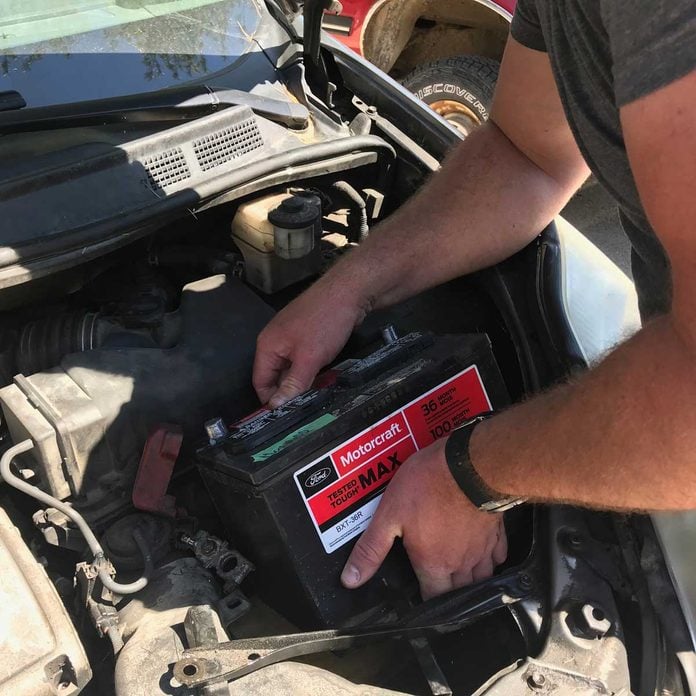
Properly disconnecting and reconnecting your car battery is essential for various reasons. It ensures the safe operation of your vehicle, protects sensitive electrical components, and helps prolong the life of your battery. Here’s why it’s important to follow the correct procedure:
- Prevents electrical issues: Disconnecting your car battery properly can prevent electrical issues such as short circuits or power surges. By disconnecting the battery, you break the electrical connection and eliminate the risk of any accidental electrical discharge that could damage the vehicle’s electrical system.
- Avoids damage to sensitive components: Many modern vehicles have complex electronics and computer systems that are highly sensitive to power fluctuations. By disconnecting the battery correctly, you safeguard these delicate components from potential damage.
- Allows for safe maintenance and repairs: Disconnecting the battery is often necessary when performing maintenance or repairs that involve electrical systems, such as replacing alternators or starters. It ensures your safety and prevents any unexpected activation of electrical components during the procedure.
- Helps with battery replacement: When replacing your car battery, disconnecting the old one properly is crucial. It allows for a smooth and hassle-free installation of the new battery without any risk of electrical damage.
- Prevents accidental discharges: Proper disconnection and reconnection of the battery minimize the risk of accidental discharges that could pose a safety hazard or lead to injury.
By following the correct procedure, you can disconnect and reconnect your car battery safely without any potential risks or complications. Always consult your vehicle’s manual for specific instructions and recommendations.
[35] [36]
Final tips and recommendations.

Here are some final tips and recommendations to keep in mind when disconnecting and reconnecting your car battery:
- Always consult your vehicle’s manual: Every car model is different, and the specific battery disconnection and reconnection procedures may vary. It’s essential to refer to your vehicle’s manual for the correct steps and any additional precautions specific to your car.
- Use protective equipment: When working with car batteries, it’s crucial to protect yourself from any potential hazards. Wear safety goggles and gloves to prevent any acid or electrical contact. Additionally, make sure to remove any jewelry or metal objects that may accidentally come into contact with the battery terminals.
- Take note of your vehicle’s settings: Disconnecting the battery will often reset some of your vehicle’s settings, such as the radio presets or clock. Before disconnecting, take note of any important settings or make backup copies if necessary.
- Inspect the battery regularly: While reconnecting the battery, take the opportunity to inspect the terminal connections for any signs of corrosion, damage, or loose connections. Clean the terminals if needed and tighten any loose connections to ensure a reliable connection.
- Consider using a memory saver: If you’re disconnecting the battery for an extended period or for maintenance that requires prolonged power interruption, consider using a memory saver device. These devices preserve your vehicle’s settings and prevent the need for reprogramming or resetting after reconnecting the battery.
- Seek professional help if needed: If you’re unsure about disconnecting or reconnecting your car battery, or if you encounter any unexpected issues, it’s always best to seek professional help from a qualified mechanic or automotive technician.
By following these final tips and recommendations, you can safely and effectively disconnect and reconnect your car battery, ensuring the longevity of your battery and preventing any potential electrical issues. Remember, safety should always be your top priority when working with car batteries.



